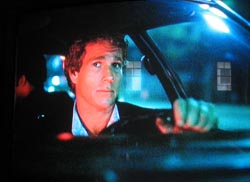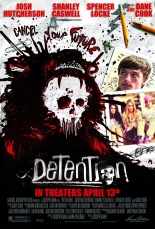
 Donnie Darko, The Breakfast Club, Scream, Back to the Future, Freaky Friday, Heathers, Christine, Ferris Bueller’s Day Off (I think), She’s All That (probably), The Fly (?!?) — it’s probably easier to name the movies not referenced by Detention.
Donnie Darko, The Breakfast Club, Scream, Back to the Future, Freaky Friday, Heathers, Christine, Ferris Bueller’s Day Off (I think), She’s All That (probably), The Fly (?!?) — it’s probably easier to name the movies not referenced by Detention.
Luckily, this ain’t a parody à la the Seltzer/Friedberg “Insert Word Here” Movie production line of films which rank among humanity’s most awful crimes. Detention, rather, is barmy genius, an aggressive meta-mash of preposterous proportions that actually manages through vigor, intelligence and breakneck lunacy to be one of the most original teen movies of recent years. Think John Hughes via Crank, or an evil twin of Scott Pilgrim vs. the World.
 You’ll likely require a master’s in film studies to catch every pop-culture reference hurled at the audience at lightning speed. This is a Twitter generation film, tailor-made for an ADHD-esque attention span, so there are no pauses for reflection, only forward momentum that could grow tiresome for some (or trigger epileptic seizures from the frenetic editing), but which I found a blast and three-quarters.
You’ll likely require a master’s in film studies to catch every pop-culture reference hurled at the audience at lightning speed. This is a Twitter generation film, tailor-made for an ADHD-esque attention span, so there are no pauses for reflection, only forward momentum that could grow tiresome for some (or trigger epileptic seizures from the frenetic editing), but which I found a blast and three-quarters.
Plotwise, none of it makes much sense. There’s a Bueller-style character (Josh Hutcherson, The Hunger Games), a beautiful wallflower klutz (Shanley Caswell, The Conjuring), a spaz, a hottie, a football star devolving into a mutant flyboy, a student who has been in detention for decades and a principal who both out-evils Breakfast Club’s Paul Gleason and proves that “comedian” Dane Cook plays an unlikable douchebag far more effectively than he does likable ones. There’s also body-switching, time travel, psychotic killers … it’s almost all films ever made in one gloriously messy craze-rave of awesome.
I cannot say all will love it; if you aren’t at least somewhat versed in the language of the genre, you’ll find it well-nigh incomprehensible. If you get it, however, you’ll see the movie beneath the artifice, and the love behind the camera. To put it weirdly, the cynicism on display is infused with a remarkable lack of cynicism. If you can parse the paradox within that Möbius sentence, you’re the right audience for this. —Corey Redekop

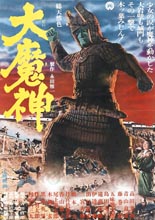
 Known to Americans under its dubbed title of
Known to Americans under its dubbed title of 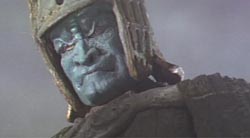
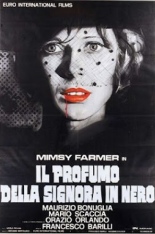
 With the complexion of tapioca pudding and a hairstyle eventually made famous by Princess Di, Silvia Hacherman (Mimsy Farmer,
With the complexion of tapioca pudding and a hairstyle eventually made famous by Princess Di, Silvia Hacherman (Mimsy Farmer, 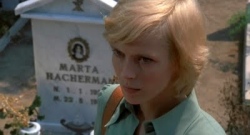
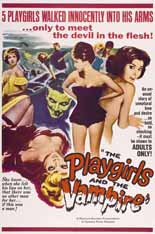
 Bearing more than a passing resemblance to the Mickey-Hargitay-goes-bonkers B-fave
Bearing more than a passing resemblance to the Mickey-Hargitay-goes-bonkers B-fave 
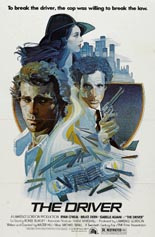
 Why isn’t
Why isn’t 